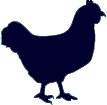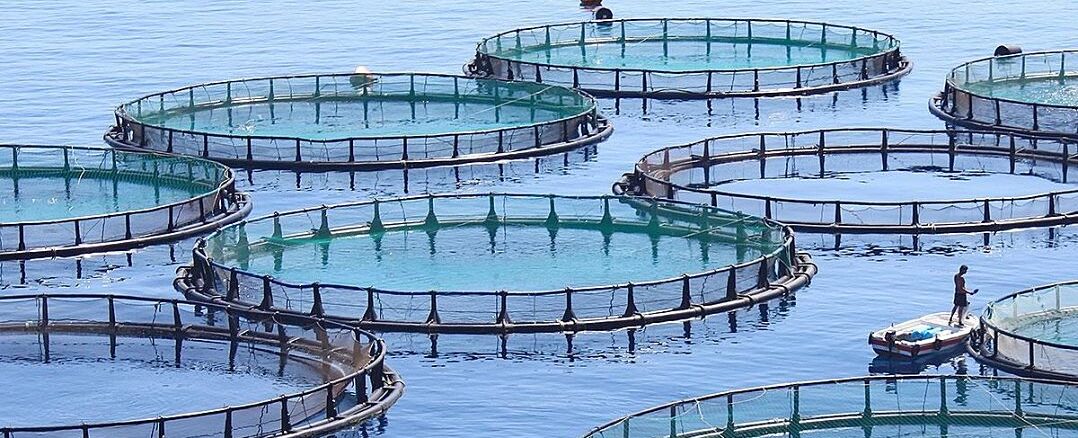Mycotoxins in aquaculture is a far less common subject of discussion in the agriculture community than mycotoxins that affect land-based livestock. It’s an important subject and one that can have a significant impact on your operation. Mycotoxins can affect the quality of feed you produce and supply, the health of the fish you raise, and the profits your operation generates.
Mycotoxins in Aquaculture
There are 3 possible handling conditions of feeds for mycotoxin production:
- Mycotoxins that develop before crops are harvested
- Mycotoxins that develop during feed and grain storage
- Mycotoxins that develop during both harvesting and storage
Mycotoxins can be deadly to aquaculture species when ingested at high levels. One of the most common types of mycotoxins that affects the aquaculture industry is aflatoxin. Aflatoxins are produced by a mold-Aspergillus flavus-that is regularly found in corn crops grown in the southeastern U.S.
Many aquaculture feeds—especially fish feeds—are corn-based and sometimes fall victim to aflatoxin contamination. Cottonseed meal is another common form of fish feed that can become contaminated by mycotoxins.
It’s important to take preventative measures to ensure that the levels of mycotoxins in your aquaculture feed and grains are safe. The best thing to do is use a high-quality mold inhibitor that will prevent the growth of molds—including Aspergillus flavus—and preserve the nutritional properties in your feeds and grains.
Find Out Which High-Quality Mold Inhibitor is Best for Your Needs
How Mycotoxins Affect Farmed Fish
Mycotoxins in aquaculture pose a huge threat to the wellbeing of fish and can be extremely difficult to detect. Two of the main reasons mycotoxins are so hard to identify are:
- The presence of molds on grain and feed doesn’t always mean mycotoxins are present
- The absence of mold or fungus doesn’t mean that mycotoxins aren’t present
Another threat presented by mycotoxins is their ability to survive extreme heat and pressure even after feed is extruded.
That means it’s vital to the health of your fish and the quality of your feed to use mold inhibitors, both early in the feed manufacturing process and during the storage of feeds and grains.
Different species of fish react to mycotoxin contamination with varying symptoms. For example, channel catfish seem to have a higher tolerance to mycotoxin contamination than other species. Rainbow trout, on the other hand, showed signs of ochratoxicosis—a form of mycotoxin poisoning—that “included liver necrosis, pale and swollen kidneys, and high mortality.
Common Symptoms of Mycotoxin Contamination in Aquatic Species
- Pale gills
- Liver damage
- Poor growth rates
- Immune suppression
The result of these harmful symptoms is a decrease in the health of fish—and all aquatic species—which lowers the profitability of fish farming operations and typically requires additional costs to implement nutritional feed plans that restore health.
Recognizing Mycotoxin Contamination in Aquaculture
Plant-based ingredients have become much more common in fish diets over the last 10 years, due mainly to the lower costs associated with corn and soybeans compared to fishmeal. While the gradual shift to more plant-based aquaculture feeds has initially saved money, it has also brought with it some challenges. Principle among those challenges is the occurrence of mycotoxins in grains and feed.
The chance of mycotoxin contamination increases when fishmeal is replaced with cereal grains and other sources of plant-based feed. “Generally feed ingredients of plant origin are more intensely contaminated with mycotoxins than fish meal or fish oil.”
If mold inhibitors and toxin binders haven’t been added to aquaculture feed to prevent mold growth and mycotoxin production, the only thing left to do is look for the signs of mycotoxin poisoning:
- Chronic inflammation
- Reduced weight gain
- Tumors
- Lesions
- Liver and kidney damage
The list of symptoms goes on. Once mycotoxin poisoning is diagnosed, there isn’t much that can be done for treatment. The best action is prevention.
Focusing on Prevention of Mycotoxicosis
There are a few things you can do to mitigate the chances of mycotoxins contaminating your aquaculture operation:
- Follow proper storage guidelines by keeping feeds and grains dry and cool.
- Use feed additives-mold inhibitors or toxin binders-to reduce the chances of mold growth and mycotoxin contamination from occurring. This is especially important if you have purchased feed from another party and have not grown it yourself.
Addressing mycotoxins in your aquaculture operation will help to improve the health of fish and other aquaculture species and reduce the chances of incurring costs associated with unhealthy livestock and contaminated feed.










